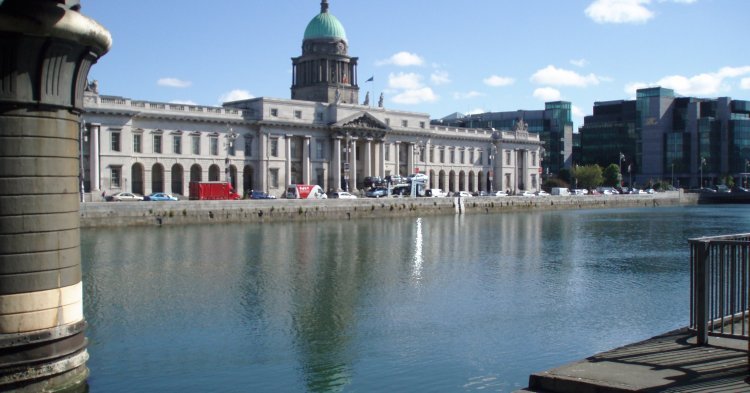The Irish crisis started in 2007 when the housing bubble burst. In the previous eleven years, houses became four times more expensive and, eventually, property prices were bound to fall. Property developers loaned intensively from Irish banks, but since the developer’s properties systematically lost their value after 2007, the loans soon became worthless to the banks. This was one of the causes of the Irish financial crisis. Other causes included the reluctance of banks all over the world to lend to each other, and the sub-prime mortgage crisis that came from the United States (US).
Ireland was particularly hit because of its close economic relationship with the US. Soon, the Irish government had to rescue the banks that were running out of cash. But by doing so, the state became heavily indebted, resulting in too high interest rates paid on its debt. In November 2010, assistance from the EU and the IMF was requested and obtained. In return for a package of €85bn, Ireland had to clean up its financial sector and take painful budgetary measures.
2012
Alarming articles about the economic crisis in southern Europe regularly fill the pages of European newspapers. However, two years after the rescue package was agreed, Ireland is perceived as an exception. It is the first country with such a package that has already returned to the financial markets for financing a part of its debt, instead of relying on the EU-IMF funding. The public deficit respected the target indicated in the rescue package. Labour costs are steadily decreasing and the public debt looks as if it has reached its tipping point at 120 percent of GDP, as indicated by the European Commission’s latest forecast.
The interest paid on its long-term debt has decreased from 12.45 percent in July 2011 to 7 percent less than a year later. Normally, Ireland should be able to finance all of its debt by lending on the markets from 2015, according to the European Commission. The youth unemployment rate for 15 to 24 year-olds was 38.7 percent in 2011, still a good 10 percent under the youth unemployment rates of Greece and Spain. *
Despite those promising evolutions, the crisis is not over yet. The Irish public deficit remains the largest of the eurozone countries. The economic state of Ireland’s trading partners, vital for its open economy, is not encouraging. Moreover, a recession is looming. According to data from the CSO, the Irish economy shrank 1.1 percent in the first quarter of 2012, figure which highly contrast with GDP growth in the nineties. In some of those years, Ireland reached more than 10 percent growth. But unlike two decades ago, Ireland cannot count on EU structural funds anymore. Currency devaluations to increase its competitiveness are impossible due to the participation in the eurozone. Ireland’s personal and corporate taxes are still very low and cannot be lowered due to EU pressure. The population at working age is in decline. Many Irish are emigrating, while Ireland is receiving fewer migrants. So the question of where Ireland will obtain its economic growth remains open.
What now?
Although some economic indicators are less worrying than earlier, Ireland’s economy remains fragile. In the midst of the recovery, the silence of the Irish is remarkable. Some 100, 000 protesters gathered in Dublin after the IMF-EU plan was approved, but since then social peace seems to have returned. It highly contrasts with the daily demonstrations on the Syntagma Square in Athens, which saw cases of self-immolation. None of that in Ireland.
The Irish even voted in favour of stronger control on the fiscal discipline in a referendum on 31 May 2012, when they had the chance to approve or refuse the so-called “European Six-pack.” The result was a positive sign, but the low turnout might have indicated apathy and disapproval as well. What is for sure is that the years of impressive growth are not coming back in the near future. Thre is a need for cultural adaptation to this new reality.


Follow the comments: |
|
